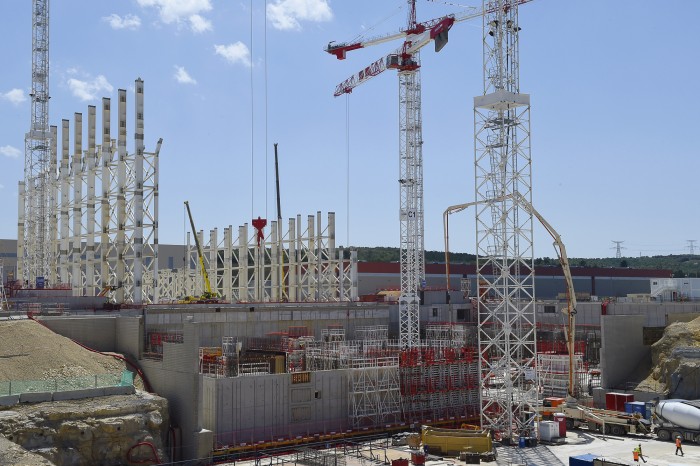Why the World’s Largest Nuclear Fusion Project May Never Succeed
The ITER project reached a critical phase last week, as a panel of experts convened to review the latest revised budget and time line to build the proposed fusion reactor delivered its findings. Launched in 2006, ITER has been plagued with delays and cost overruns as the challenge of bringing six countries—the United States, China, India, Japan, Russia, and South Korea—together with the European Union to build an experimental reactor has proved nearly insurmountable.
The latest schedule put forth by the project’s director, French nuclear physicist Bernard Bigot, calls for the machine to be switched on by 2025 and to actually achieve fusion only in 2035—a dozen years later than originally planned. The panel found that timing plausible but said that the latest budget, which would add another €4.6 billion ($5.3 billion) in cost overruns to the project, was unlikely to become available.

ITER’s troubles are striking at a time when private-sector fusion companies, such as General Fusion and Tri Alpha Energy, are attracting venture capital funding and making apparent progress in building prototypes (see “Finally, Fusion Takes Small Steps Toward Reality”). Southern California-based Tri Alpha, which has received nearly half a billion dollars in venture funding from a list of investors that includes Goldman Sachs and Vulcan, the investment fund of Microsoft cofounder Paul Allen, said in August that it had successfully confined the cloud of ionized plasma in which the fusion reactions will occur. And General Fusion, which has also received millions in private funding, last month was awarded another $12.75 million from the Canadian government.
The next few months will likely determine the fate of ITER. The U.S. Department of Energy is expected this week to release a report on the future of American participation in the project (the Senate has voted more than once to end U.S. funding for ITER, but those measures have died in the House). And ITER’s own governing council will decide in June on how the ambitious but ill-starred project will move forward.
Keep Reading
Most Popular
Large language models can do jaw-dropping things. But nobody knows exactly why.
And that's a problem. Figuring it out is one of the biggest scientific puzzles of our time and a crucial step towards controlling more powerful future models.
How scientists traced a mysterious covid case back to six toilets
When wastewater surveillance turns into a hunt for a single infected individual, the ethics get tricky.
The problem with plug-in hybrids? Their drivers.
Plug-in hybrids are often sold as a transition to EVs, but new data from Europe shows we’re still underestimating the emissions they produce.
Stay connected
Get the latest updates from
MIT Technology Review
Discover special offers, top stories, upcoming events, and more.